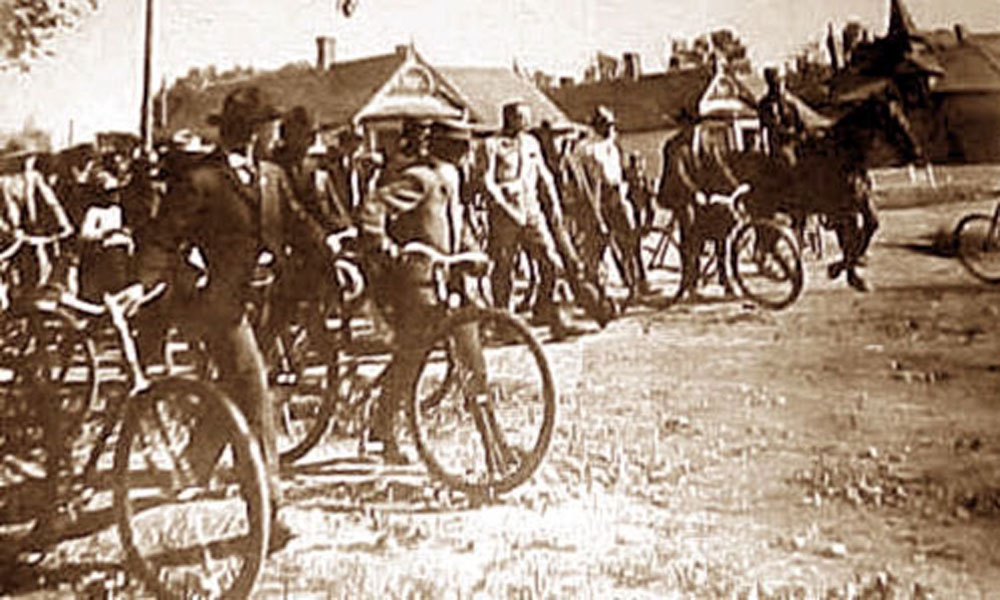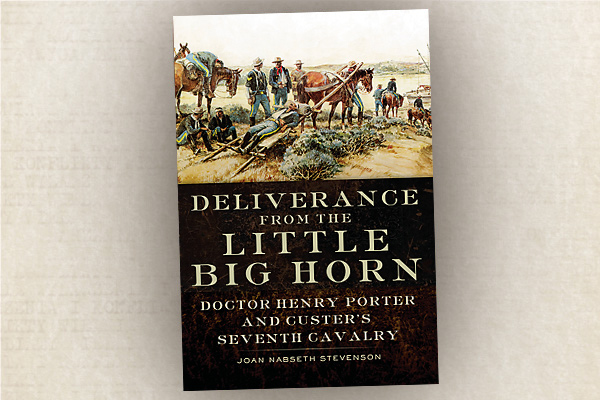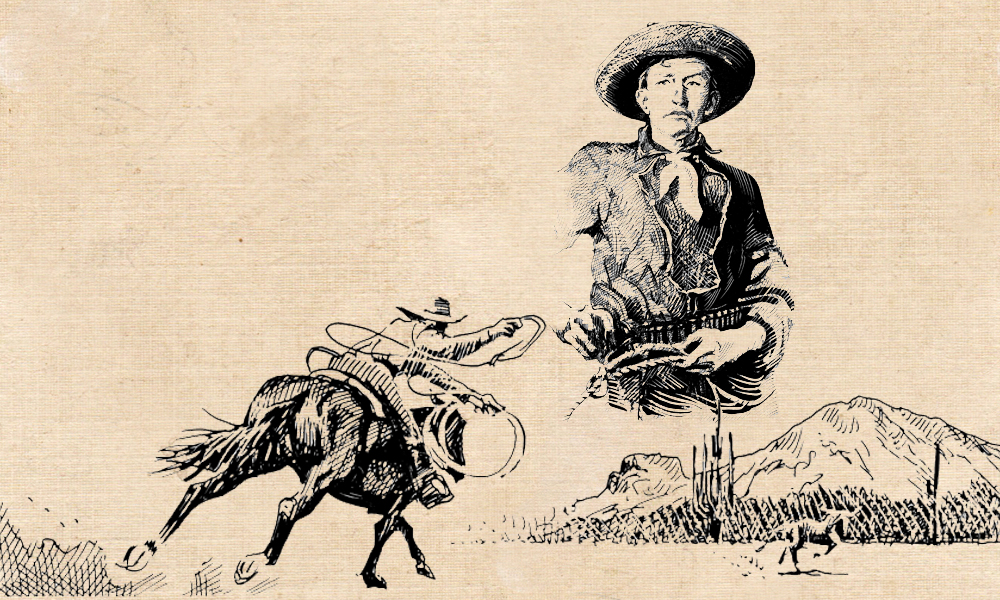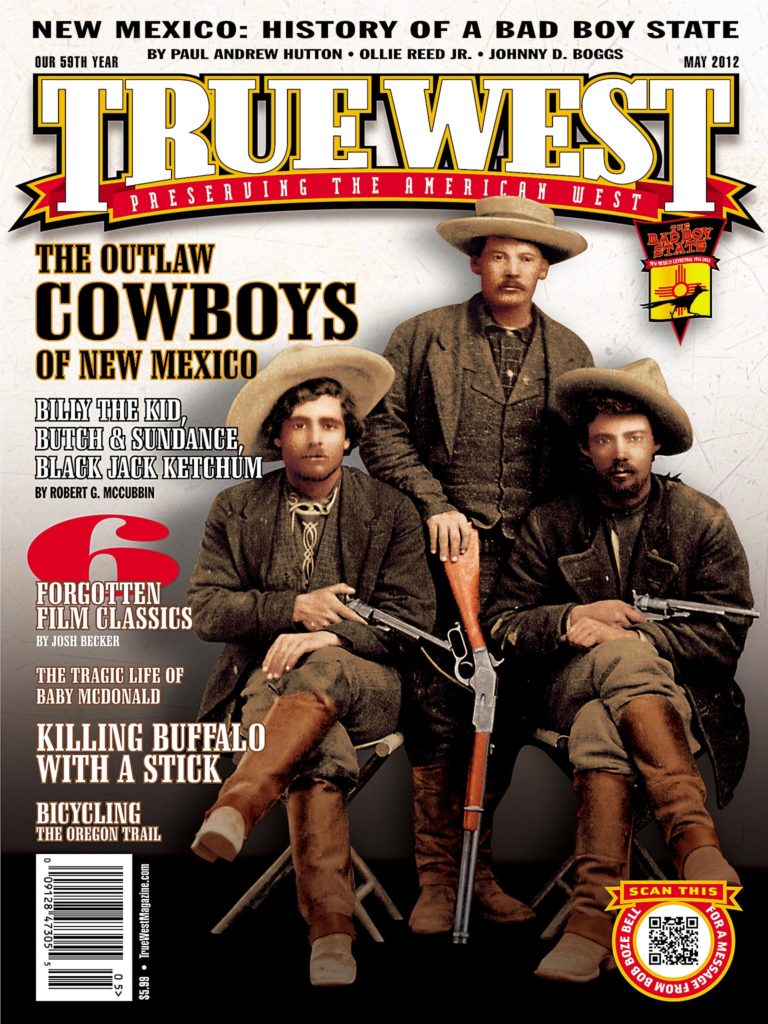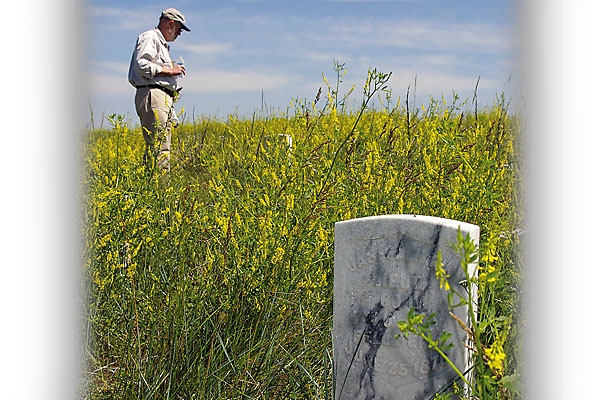
“CROW AGENCY, Mont.—Pulitzer Prize-winning author Thomas Powers and an unknown hack scribe were killed today by a speeding tourist at Little Bighorn Battlefield National Monument.”
Luckily, the SUV zips by without carnage, leaving me free to experience perhaps the best way to tour this historic battlefield. By chance, I’ve caught Thomas Powers as he and a few family members are walking from Reno-Benteen Battlefield 4½ miles all the way back to the visitors center. I’m offered the chance to tag along. Talk about Custer’s luck!
Powers, of course, is a Pulitzer Prize-winning author who won a Spur Award from Western Writers of America for his book The Killing of Crazy Horse, published in 2010 by Alfred A. Knopf. The only person who could provide more insight into what happened here is, maybe, George A. Custer, and considering how his tour turned out, I’m better off walking with Powers.
“I first came here in 1963 in September,” Powers says, “and it was covered with snow. The roads were terrifying.”
The environs today are much better. It’s late June, almost 135 years to the day after Crazy Horse, Gall, Sitting Bull and a who’s who of mostly Lakota and Cheyenne all-stars killed the Boy General and much of his command. No snow this morning. In fact, the park hasn’t been open for long, and it’s already turning mighty hot.
It was hot here in 1876, too, in more ways than one. Crazy Horse and the Lakota were protecting their families. The 7th Cavalry found itself in disarray, without battlefield cohesion or command discipline.
All this makes me ask a question. In his book The Last Stand, Nathaniel Philbrick suggests that Custer’s two-time Medal of Honor-winning brother, Tom, might have killed George “rather than see his wounded brother tortured to death.” What do you think?
“That doesn’t sound right,” Powers says. “They believed they were invincible.”
“Well, you would know,” I tell him.
Powers laughs, shakes his head and corrects me: “I’m one of many who has an opinion.”
We move on, stopping at graves, reading over (and analyzing) the historical markers and studying the battlefield from a ground level. We also pick up trash along the roadside. Powers lives in Vermont. They don’t like litterbugs in Vermont, and we don’t cotton to them out West, either. Tourists can be so rude.
Speaking of rude people, what about Capt. Frederick Benteen? Custer ordered Benteen to “Come on. Big village. Be quick. Bring packs.”
Benteen didn’t, and lived. Was he responsible for Custer’s demise? Did he disobey a direct order?
“You’re always allowed to ‘exercise your own judgment,’” Powers says. “You’re never under orders to get yourself and your whole command killed.”
Finally, we have reached Last Stand Hill and the Indian Memorial. Which brings me to another question: If you had to write the book again, after walking the battlefield, what would you change?
“I would be more exact in describing the topography,” Powers says. “I would think harder about where certain things happened. I would describe more carefully about the distance between Calhoun Hill and Last Stand Hill.”
Just outside the visitors center before going our separate ways, Powers looks at his watch. It has taken roughly four hours to make the walk.
“That,” he says, “is the last full measure.”
Johnny D. Boggs, who once shook Son of the Morning Star author Evan S. Connell’s hand, also highly recommends The Journey of Crazy Horse: A Lakota History by Joseph M. Marshall III.


